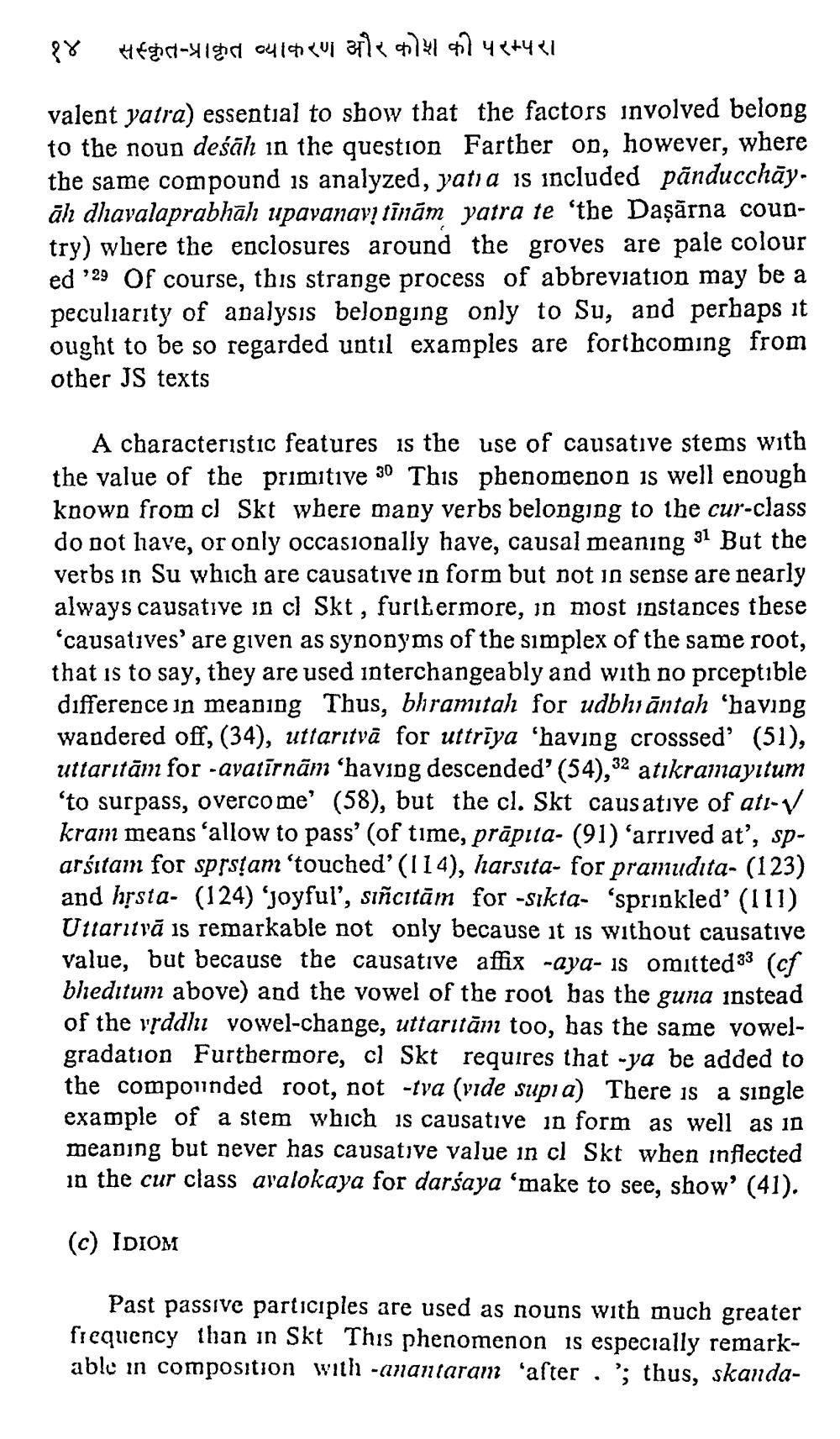________________
88
Hegoat-410
O4101ui apie 0,141 07 42+421
valent yatra) essential to show that the factors involved belong to the noun deśāh in the question Farther on, however, where the same compound is analyzed, yatia is included pānducchāy. āh dhavalaprabhāh upavanavı tinām yatra te 'the Daşārna country) where the enclosures around the groves are pale colour ed ’29 Of course, this strange process of abbreviation may be a peculiarity of analysis belonging only to Su, and perhaps it ought to be so regarded until examples are forthcoming from other JS texts
A characteristic features is the use of causative stems with the value of the primitive 30 This phenomenon is well enough known from cl Skt where many verbs belonging to the cur-class do not have, or only occasionally have, causal meaning 31 But the verbs in Su which are causative in form but not in sense are nearly always causative in cl Skt, furttermore, in most instances these 'causatives' are given as synonyms of the simplex of the same root, that is to say, they are used interchangeably and with no prceptible difference in meaning Thus, bhramitah for udbhıāntah 'having wandered off, (34), uttaritvā for uttrīya 'having crosssed' (51), uttaritām for -avatīrnām “having descended' (54), 32 atıkramayıtum 'to surpass, overcome' (58), but the cl. Skt causative of ati-v kram means 'allow to pass' (of time, prāpita- (91) 'arrived at', sparsıtam for spsstanı 'touched'(114), harsita- for pramudita- (123) and hșsta- (124) 'Joyful', siñcitām for -sıkta- 'sprinkled' (111) Uttaritvā is remarkable not only because it is without causative value, but because the causative affix -aya- is omitted 33 (cf blieditum above) and the vowel of the root has the guna instead of the ręddhi vowel-change, uttaritām too, has the same vowelgradation Furthermore, cl Skt requires that -ya be added to the compounded root, not-tva (vide supia) There is a single example of a stem which is causative in form as well as in meaning but never has causative value in cl Skt when inflected in the cur class avalokaya for darśaya ‘make to see, show' (41).
(C) IDIOM
Past passive participles are used as nouns with much greater frequency than in Skt This phenomenon is especially remarkable in composition with -anantaram 'aster .'; thus, skanda




